Bed Bug Bites: Symptoms, Prevention, and How to Treat
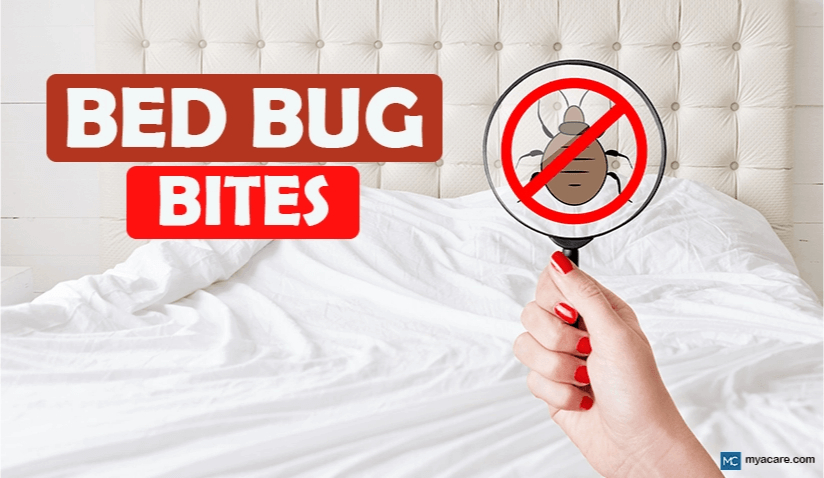
Medically Reviewed by Dr. Rosmy Barrios and updated on November 23, 2023
Bed bugs are small brown insects, roughly 5-7mm across when fully grown, that feed on human blood. They tend to inhabit sleeping areas, typically beds, as well as couches and chairs. Bed bugs are not known to be vectors that transmit diseases, yet their bites can cause severe itching and, rarely, allergic reactions. They are known for causing anxiety and insomnia.[1]
In recent months, bed bugs have been getting a lot of press due to the recent outbreak in Paris. Citizens and travelers have been filming them crawling out of hotel beds, the upholstery in trains and buses, and other places all over the city[2]. Warnings have been issued for those traveling to and from the city to take precautions such as checking their clothing, baggage, seats, and hotel rooms before and after arrival. While eerie and unpleasant, parts of Paris remain largely unaffected. The city is also making a major effort to get rid of the pests before the 2024 Olympics.
Further investigation has revealed that bed bug infestations are a much larger global problem than previously realized. Outbreaks since the early 2000s around the world include all states of the US, Australia, the UK, and many other countries.
The recent surge of bed bug activity is thought to be related to:
- The rise in international travel
- Overcrowded living conditions
- Climate change (which appears to favor breeding conditions)
- Genetic adaptation
Bed bugs were previously thought to be eradicated in human settlements in the 40s and 50s. This was due to the widespread use of heavy pesticides, like DDT, that were literally sprayed on people, in homes, and all over the streets. Unfortunately, while this mass “cleansing” might have quelled their numbers for several decades, it seems to have spurred on the current resilience of 21st-century bed bugs to most conventional chemical solutions.
If you live in an area witnessing a bed bug outbreak or are planning a trip to one, don’t panic. In this article, we will explain what bed bugs are, what bed bug bites look like, how to tell them apart from other bites, and how to best prepare while traveling.
What Do Bed Bug Bites Look Like?
It can be tough to identify bed bug bites as they can resemble other insect bites, depending on how many bites are received and the sensitivity of the person that gets bitten. According to Pest Control Technology, 30 to 60% of people do not experience a reaction to a bed bug bite. Patients over 65 years and children aged 1-10 years appear to be less reactive than other age groups.
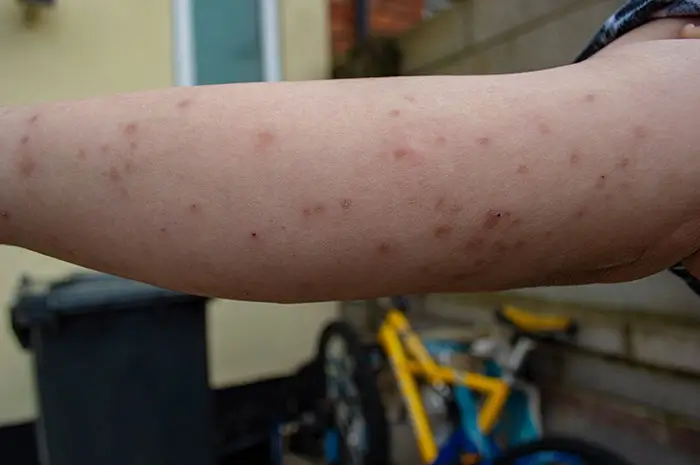
When symptoms do develop, bed bug bites look like large red fluid-filled blisters with the following features:
- Bites are red and swollen, with a dark spot at the center of each bite
- May also look like a hive or welt
- Can be larger than 1cm in diameter
- Arranged in lines or clusters, with 3 or more bites grouped together
- Sometimes accompanied by blood stains on the sheets from scratching[1] [2]
Bed bug bites can bleed or become infected from scratching, which can change their appearance.
It needs to be well-understood that bed bugs are not able to jump from person to person and that there is nothing contagious about their bites unless they get infected.
Where Do Bed Bugs Come From?
Bed bugs are prevalent in virtually all places where people tend to gather, including homes, hotels, schools, offices, stores, and even public transportation. They generally find their way into your home after you've been away, often hitchhiking on your luggage or clothing. Alternatively, they may infiltrate your living space through second hand furniture that's already infested. If a building or hotel is dealing with an infestation, they can travel from one apartment to another.
Scientists have tracked the genetic origins of bed bugs back millions of years ago. All species of bed bugs prey upon living hosts that have nesting habits, hiding out in bat roosts, bird nests, owl burrows, and, of course, human beds. Records of bed bugs in human history date as far back as 1500 BC to ancient Egypt and Rome.
According to findings from 2019, the origins of the common bed bug plaguing the world today are much older than our own origins, dating back more than 100 million years. That means that these bugs were possibly prevalent during the age of the dinosaurs and may have evolved alongside primitive humans as well.[3]
Bed Bug Bite Symptoms
Bed bug bites can cause various symptoms, such as:
- Itching
- Burning
- Swelling
- Redness
- General inflammation
- Fluid-filled blisters, fake hives or welts
There is a low chance that bed bug bites might induce a severe allergic reaction in a sensitive individual. In very rare cases, a bed bug bite can lead to an anaphylactic reaction requiring emergency care.[3]
How Long Do Bed Bug Bites Last?
Bed bug bites usually last for several days or up to two weeks. However, in some cases, they can last for several months.
Effects of Bed Bugs on Human Health
Like many biting insects, bed bugs carry foreign proteins and toxins in their saliva that are known to provoke skin reactions and more.[4]
The most common type, C. Lectularius, is known to inject one with:
- Nitrophorin, which dilates blood vessels
- Apyrase, which inhibits platelet activation
- Blood thinning substances that inhibit factor X, which is made by the body for blood clotting
These substances are a common reason why bed bug bites bleed easily. The immune reaction to bed bug antigens (foreign proteins) is the reason why they itch.
Bed bugs can cause various health effects, such as:
- Sleeplessness: Bed bug bites are notoriously itchy and can cause one to wake up just to scratch them in the night. Unfortunately, scratching causes them to become more itchy and contributes to the “itch-scratch” cycle, as well as insomnia.
- Allergic reactions: Some people may develop an allergic reaction to bed bug bites, which may include severe itching, hives or blisters. People who have been bitten repeatedly for long may be more susceptible to allergic reactions.
- Secondary infections: Scratching the bite site may lead to secondary infections such as impetigo (a bacterial skin infection).
- Anemia: In rare cases, repeated exposure to bed bug bites may lead to anemia (a condition where there is a shortage of red blood cells).
Perhaps worse than their physical effects, bed bugs can put many people on edge, resulting in anxiety and other psychological issues. Some people stigmatize bed bug bites and mistakenly feel that they are somehow contagious or that bed bugs can infest their living spaces due to contact with a person who has been bitten. This can substantially affect a person’s self-esteem and quality of life.
Bed bug infestations are not a directly transmissible phenomenon. Although they can travel while hidden in luggage and clothing (not usually worn by someone), they prefer stationary (sleeping) hosts and to hide during the day.
Can Bed Bugs Transmit Diseases?
Bed bugs are not associated with disease transmission or infectious outbreaks. Research has shown that bed bugs are capable of harboring several pathogens, yet they also possess antimicrobial or neutralizing substances that likely prevent transmission from bites.[5]
Bed Bug Bite Prevention
To prevent bed bug bites, you can try:
- Inspecting second hand furniture prior to bringing it into your home.
- Checking your hotel room for signs of bed bugs before settling in.
- Keeping your luggage off the floor, the mattress, or furniture with upholstery, and away from walls in hotel rooms. Some hotels offer a luggage rack for unpacking and stacking.
- Inspecting your luggage and clothing carefully after traveling.
- Keeping your home and living areas clean and clutter-free.
- Fully filling and sealing holes, cracks and crevices around your home.
- Using mattress covers designed to keep bed bugs out.
- Washing laundry, especially linen, on the highest heat possible.
- Get professional pest control support from an exterminator if infestations occur regularly in your home or area.
Signs of Bed Bug Infestation
Signs of a bed bug infestation include:
- Blood stains on your sheets or pillowcases.
- Bed Bug excrement on sheets and mattresses, marked by dark or rusty spots.
- Bed Bug fecal spots, egg shells or molted skins in areas where bed bugs hide.
- A noxious, musty odor from the bugs’ scent glands.
How To Get Rid Of Bed Bugs
Several preventive measures can help eliminate a bed bug infestation and should be followed.
Additionally, to get rid of bed bugs, you can try:
- Vacuuming regularly.
- Washing bedding and clothes in hot water.
- Avoid using bedding or sleeping in clothing that is red or black. Bed bugs might be attracted to these colors and avoid green or yellow.[6]
- Scrubbing mattress seams with a stiff brush.
- Using a bed bug spray.
- Getting bed bug traps.
- Getting rid of infested mattresses, furniture and clothing.
It is important to understand that many conventional chemicals do not work on bed bugs and that even professionals make use of a combination of both chemical and non-chemical treatments. Overuse of chemicals in an attempt to rid the house of bed bugs can backfire, resulting in cardiovascular and neurologic toxicity, especially in animals and children.
How To Treat Bed Bug Bites
In most cases, bed bug bites get better on their own. If the itching becomes unbearable, or the bite gets infected or triggers an allergy, then the following steps could be tried:
- Keep the bite clean to avoid infections and don’t scratch. If it gets infected, keep it disinfected and consult with your doctor if you come down with general symptoms.
- Use an over-the-counter pain reliever or ointment to relieve swelling and pain.
- Take Benadryl or another oral antihistamine before sleep to decrease itching and bed bug bite allergy, or have a doctor prescribe a more potent antihistamine.
- Apply an over-the-counter (OTC) or prescription steroid cream to decrease inflammation and itching. It is important to make sure the bites do not get infected and to keep them clean if using steroids, as these can interfere with immune function.
In addition to OTC medications, several home remedies may help relieve symptoms of bed bug bites. Try one or more of the following methods:
- Applying a cold cloth or an ice pack wrapped in a towel.
- Applying a thin paste comprising baking soda and water.
- Bathing with 1/2 cup baking soda and/or a soothing essential oil.
Bed Bug Bite Identification vs Different Types of Insect Bites
A bed bug bite can be hard to identify as it can resemble other insect bites. This slideshow compares the characteristics of 5 common insect bites attributable to bed bugs, ticks, mosquitoes, fleas, and spiders.
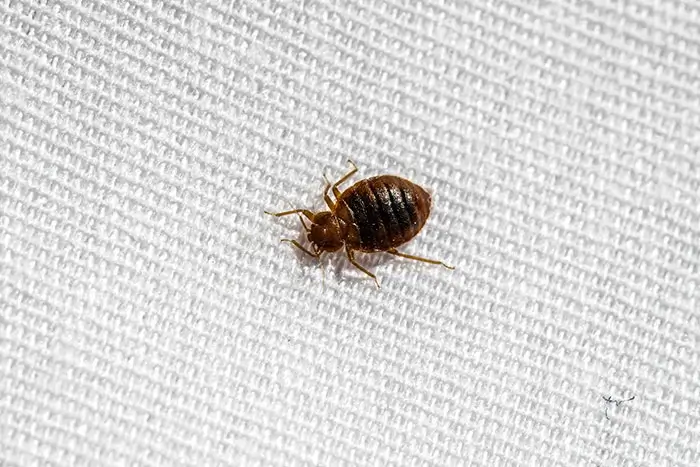
Insect: Bed bug
Bite Features: Red, swollen, with a central dark spot. 0.7-5 cm diameter. Could look like a hive or welt.
Pattern: In groups of three or more, often in a straight line.
Symptoms and Duration: Itchy and burning. Symptoms may take up to 14 days to appear and can last for several weeks.
Places found: Found in beds, sofas, chair cushions, and furniture crevices. Attractants: CO2, warmth, histamine (allergic people), and black or red clothes or linen.
Attractants: CO2, warmth, histamine (allergic people), and black or red clothes or linen.
Prevention Measures: Inspect bedding, clothing, luggage and second hand furniture. Fill cracks and holes in the home. Vacuum frequently.

Insect: Tick
Bite Features: Small, red, raised bump with a red radius around it. A second ring or 'bullseye' might indicate a Lyme disease bite.
Pattern: A single bite. The tick often stays in place until it is done feeding.
Symptoms and Duration: Ticks often transmit infections that can cause serious symptoms such as fever, headache, rash or chronic illness. Bites resolve in 30 days. Symptoms take days to months to clear or can be lifelong.
Places found: Ticks are commonly found in wooded areas or tall grasses.
Attractants: CO2, sweat and heat.
Prevention Measures: Wear long-sleeved shirts and pants when outdoors. Use tick repellent on skin and clothing. Check yourself for ticks after being outdoors.
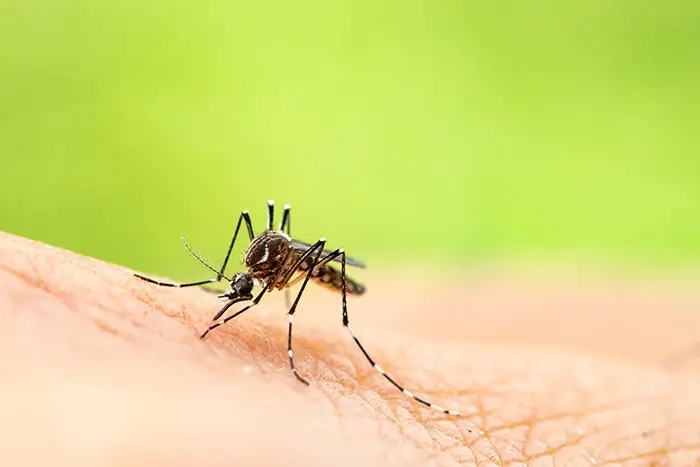
Insect: Mosquito
Bite Features: Small, raised bumps. Often colorless, sometimes red.
Pattern: None.
Symptoms and Duration: Itching, swelling, and redness, especially if scratched. Symptoms usually appear within minutes of the bite and last for a few days.
Places found: Mosquitoes are commonly found near standing water, such as ponds, lakes, and swamps.
Attractants: CO2, sweeter or alcoholic blood, sweat, blood type O or AB, pregnancy, dark clothing, and body heat.
Prevention Measures: Use mosquito repellent. Wear long-sleeved shirts and pants. Use bed nets.
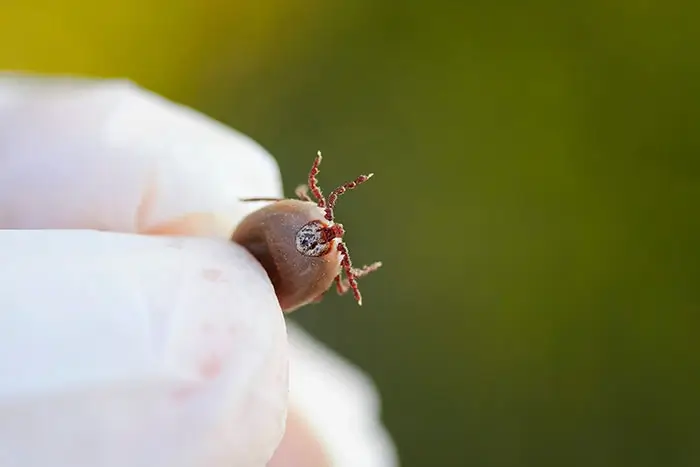
Insect: Flea
Bite Features: Small, red spots, up to 1mm in diameter.
Pattern: In a straight line or cluster. More likely to bite the feet, ankles or legs.
Symptoms and Duration: Itching and redness. Symptoms usually appear within hours of the bite and last for several days.
Places found: Pets and other animals.
Attractants: Body heat, movement, CO2 and vibration.
Prevention Measures: Treat pets with flea medication and shampoo. Vacuum frequently. Wash pet bedding frequently.
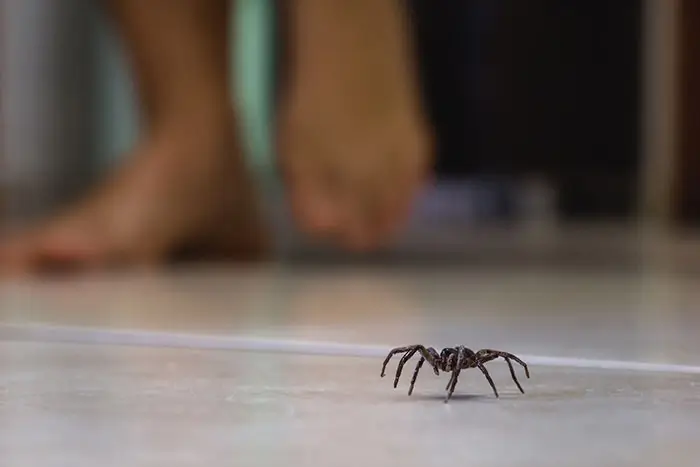
Insect: Spider
Bite Features: Two puncture marks on the skin. Size depends on the spider. Sometimes raised with red, bumpy rash or white halo.
Pattern: A single bite, sometimes two.
Symptoms and Duration: Often itchy. Might leak or get infected. Can take a few days to weeks to heal. Some spiders might cause a rash, fever, cramps, nerve pain, and other symptoms.
Places found: Spiders are commonly found in dark areas such as basements or attics.
Attractants: None. They bite when threatened.
Prevention Measures: Keep the house free of webs, dust and flies, or mosquitoes. Wear protective clothing when outdoors. Inspect clothing.
If bitten by a tick or spider, take a picture or keep the specimen as proof (if possible) and seek medical attention immediately if a toxic species is suspected to have bitten you or if you come down with severe symptoms.
When identifying bed bug bites, you can also ask and follow up on the below questions:
- Did the bites appear after waking up one morning?
- Did the bites appear following a plane flight, train or bus ride, or after staying in a hotel with a large influx of travelers?
- Did they appear after recently buying second hand or used furniture, luggage or clothing?
- Do you sleep on an old mattress or use old furniture?
- Do you live in a crowded area or an apartment with a known history of outbreaks?
Conclusion
Bed bugs are blood-sucking insects that are known to keep one awake at night and cause itchy, irritating bites. They live in upholstery, mattresses, clothing, and furniture and are found in just about every place people tend to gather, including residences, hotels, schools, offices, retail stores, and even public transportation. To prevent bed bug bites, you should inspect second hand furniture before you bring it home and check your hotel room for infestation signs before settling in. Most of the time, bed bug bites do not require medical attention. If you experience severe symptoms like swelling and burning sensation at the bite site, then consult with your doctor immediately. Bed bug infestations can be controlled through appropriate cleanliness measures and with professional pest control.
To search for the best doctors and healthcare providers worldwide, please use the Mya Care search engine.
The Mya Care Editorial Team comprises medical doctors and qualified professionals with a background in healthcare, dedicated to delivering trustworthy, evidence-based health content.
Our team draws on authoritative sources, including systematic reviews published in top-tier medical journals, the latest academic and professional books by renowned experts, and official guidelines from authoritative global health organizations. This rigorous process ensures every article reflects current medical standards and is regularly updated to include the latest healthcare insights.

Dr. Rosmy Barrios is an aesthetic medicine specialist with international work experience. She earned her physician diploma at the Universidad Del Norte’s School of Medicine in Barranquilla, Colombia, and her specialty at John F. Kennedy University in Buenos Aires, Argentina. Dr. Barrios is a member of the Pan-American Aesthetic Medicine Association (PASAM) and the Union Internationale de Médecine Esthétique (UIME). She is an expert health writer with keen interests in aesthetic medicine, regenerative aesthetics, anti-aging, fitness, and nutrition. Currently, Dr. Barrios heads the Regenerative Aesthetics department at a renowned Internal Medicine clinic based in Belgrade, Serbia.
Sources:
Featured Blogs



